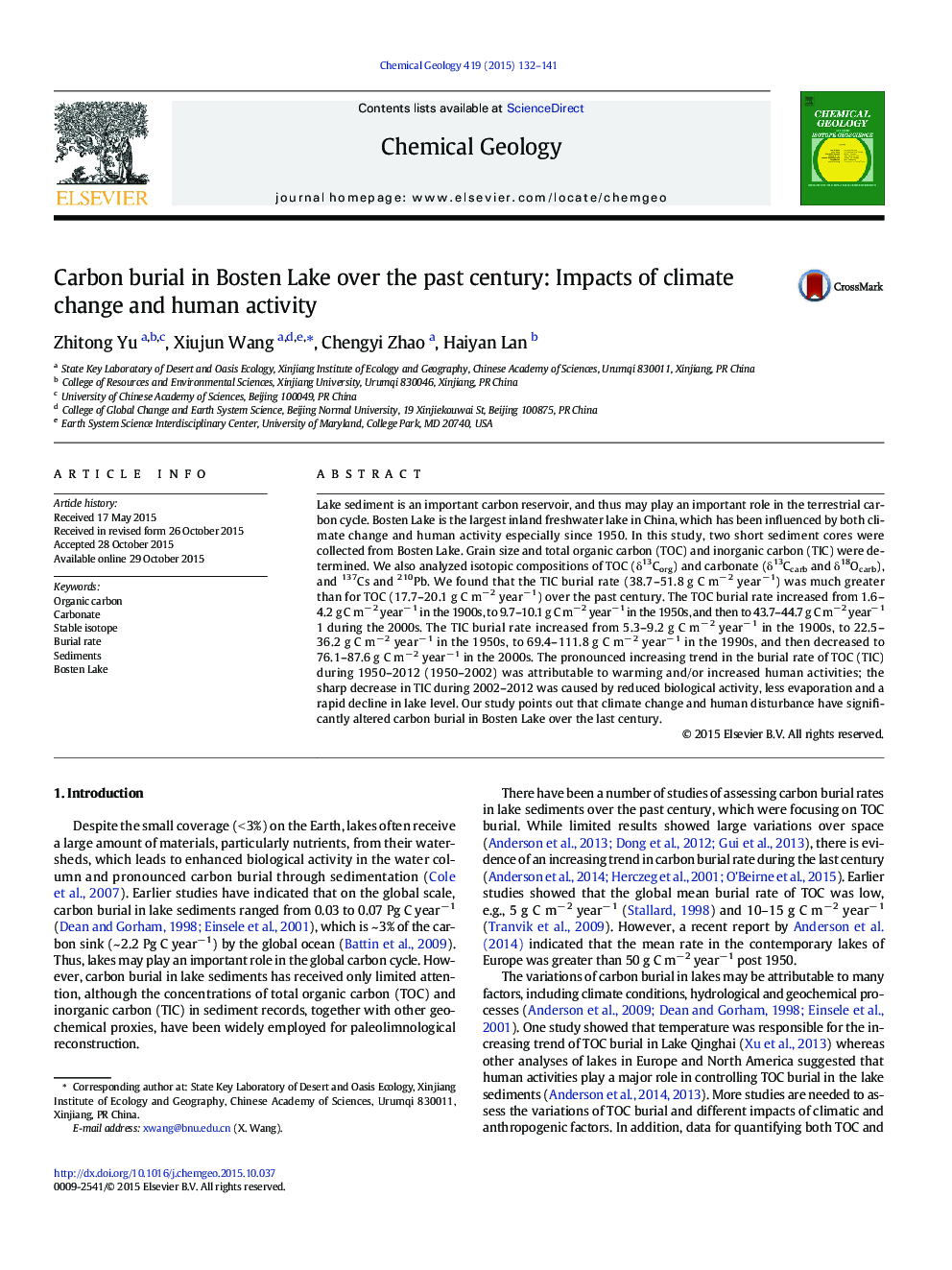| Article ID | Journal | Published Year | Pages | File Type |
|---|---|---|---|---|
| 4698407 | Chemical Geology | 2015 | 10 Pages |
•TIC burial exceeds TOC burial by a factor of two in the Bosten Lake.•There is a significantly increasing trend in both TOC and TIC burial post 1950.•Climate change and human activity cause the variations of carbon burial.
Lake sediment is an important carbon reservoir, and thus may play an important role in the terrestrial carbon cycle. Bosten Lake is the largest inland freshwater lake in China, which has been influenced by both climate change and human activity especially since 1950. In this study, two short sediment cores were collected from Bosten Lake. Grain size and total organic carbon (TOC) and inorganic carbon (TIC) were determined. We also analyzed isotopic compositions of TOC (δ13Corg) and carbonate (δ13Ccarb and δ18Ocarb), and 137Cs and 210Pb. We found that the TIC burial rate (38.7–51.8 g C m− 2 year−1) was much greater than for TOC (17.7–20.1 g C m− 2 year− 1) over the past century. The TOC burial rate increased from 1.6–4.2 g C m− 2 year− 1 in the 1900s, to 9.7–10.1 g C m− 2 year− 1 in the 1950s, and then to 43.7–44.7 g C m− 2 year− 1 during the 2000s. The TIC burial rate increased from 5.3–9.2 g C m− 2 year− 1 in the 1900s, to 22.5–36.2 g C m− 2 year− 1 in the 1950s, to 69.4–111.8 g C m− 2 year− 1 in the 1990s, and then decreased to 76.1–87.6 g C m− 2 year− 1 in the 2000s. The pronounced increasing trend in the burial rate of TOC (TIC) during 1950–2012 (1950–2002) was attributable to warming and/or increased human activities; the sharp decrease in TIC during 2002–2012 was caused by reduced biological activity, less evaporation and a rapid decline in lake level. Our study points out that climate change and human disturbance have significantly altered carbon burial in Bosten Lake over the last century.
